Wildlife Sightings - November 2016
After the exceptional deluge of waifs and strays from far-flung lands throughout October, November here on the Yorkshire coast was a little less frenetic, although it was still an extremely busy and productive month by any standards.
The month kicked off with a nice selection of late autumn migrants scattered along the coast on 1st, with a Rough-legged Buzzard and five White-fronted Geese at Spurn, five Shorelarks and 15 White-fronted Geese at Filey and a Black-throated Diver south at Long Nab, the latter being the first of a good number this month reported from the regular watchpoints. Talking of the sea, it was also a good month to catch up with both Little Auks and Pomarine Skuas, with regular reports of small numbers of each gracing our coast; Great Northern Divers, meanwhile, continued their general autumn and winter upsurge and were widely reported. Interestingly, Sooty Shearwaters were a regular joy encountered on November watches at the main observation spots, with a peak of six past Flamborough on 23rd.
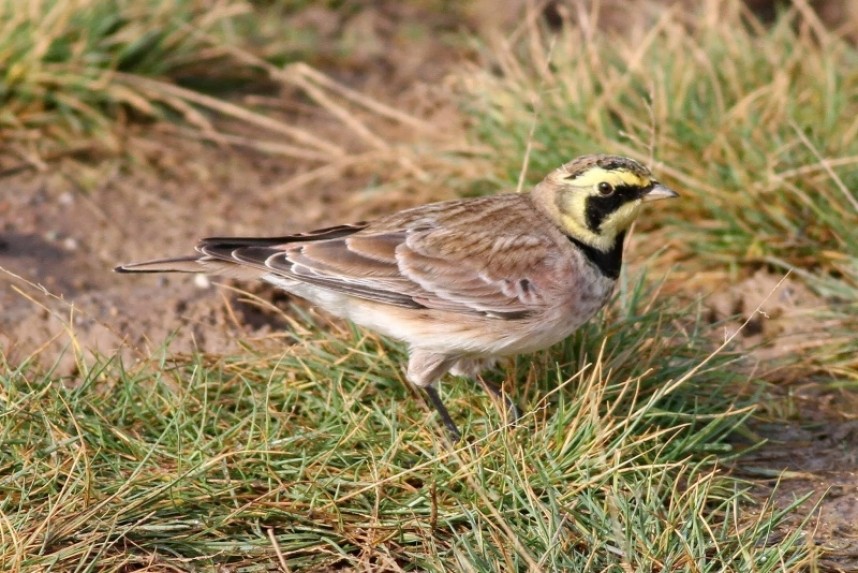
Shorelark Spurn © Richard Willison
A Cattle Egret at Spurn on 2nd was an excellent find (and just the third ever site record) and coincided with a high count of 44 Little Egrets at the Triangle there, while the Rough-legged Buzzard was joined by a second bird; raptors were very much on the move, with two Hen Harriers south at Hunmanby Gap followed by perhaps one of the same at nearby Buckton the following day – amazingly joined by a Pallid Harrier on 4th! Also on 3rd, high counts of 53 Woodcock and 21 Waxwings at Spurn were notable, while Flamborough logged a Grey Phalarope and a single White-beaked Dolphin.
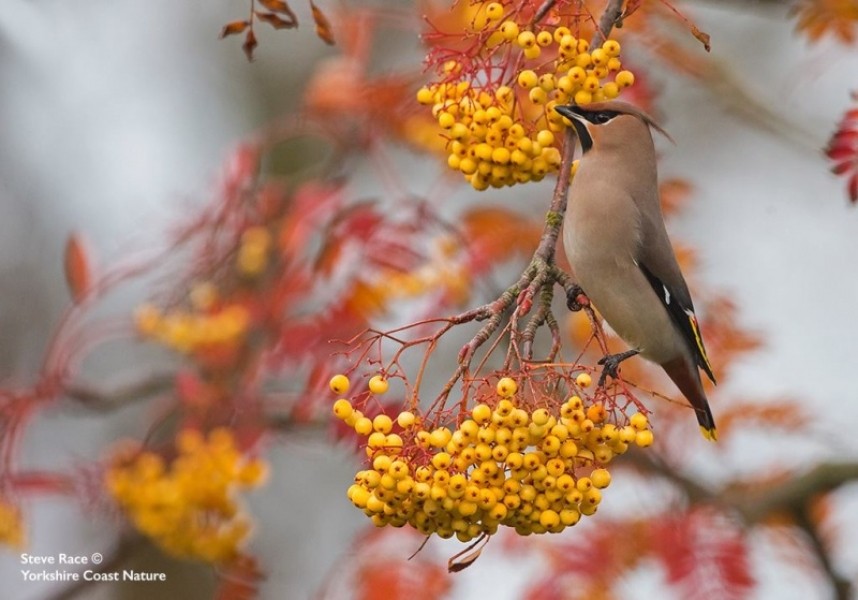
Waxwing Scarborough © Steve Race
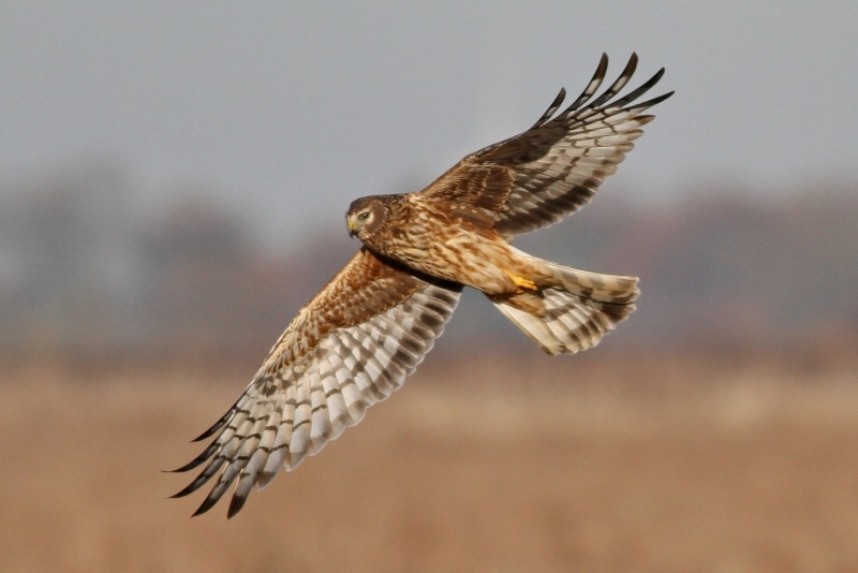
Hen Harrier Stone Creek © Richard Willison
Three Shorelarks at Spurn on 4th continued a great autumn for these increasingly rare winter visitors, while the Pallid Harrier relocated to Welwick marshes on the Humber, where birders were also treated to a Rough-legged Buzzard and a Hen Harrier over the following days. Six Shorelarks at Long Nab on 6th were by-passed by Glaucous Gull, the same day seeing a late Sabine's Gull drifting past Hunmanby Gap. Whilst the Skinningrove Eastern Black Redstart continued its long stay in the north of the county, another male was found amongst the boulders at Cayton Bay on the 7th. Arguably the big story of the month; despite this autumn's influx, with British records only just into double figures this remains very much a top-drawer find.
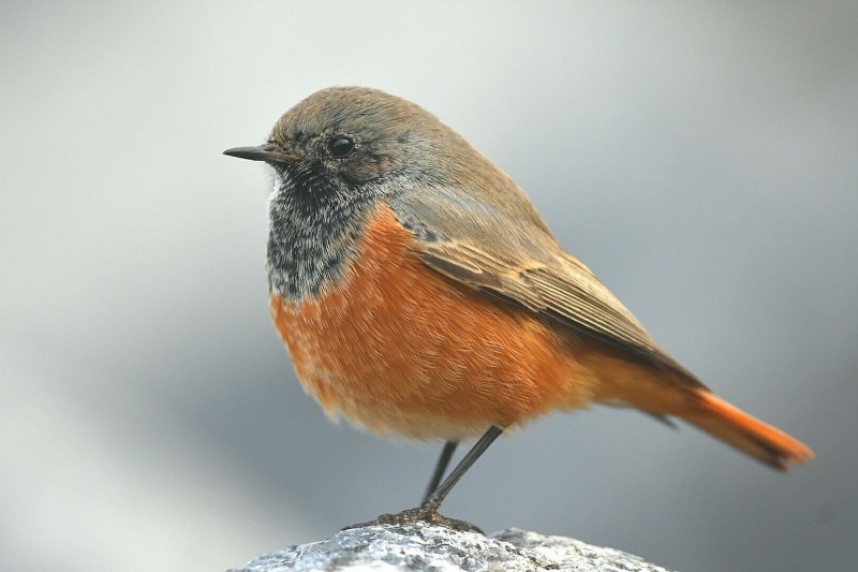
Eastern Black Redstart Skinningrove © Andy Hood
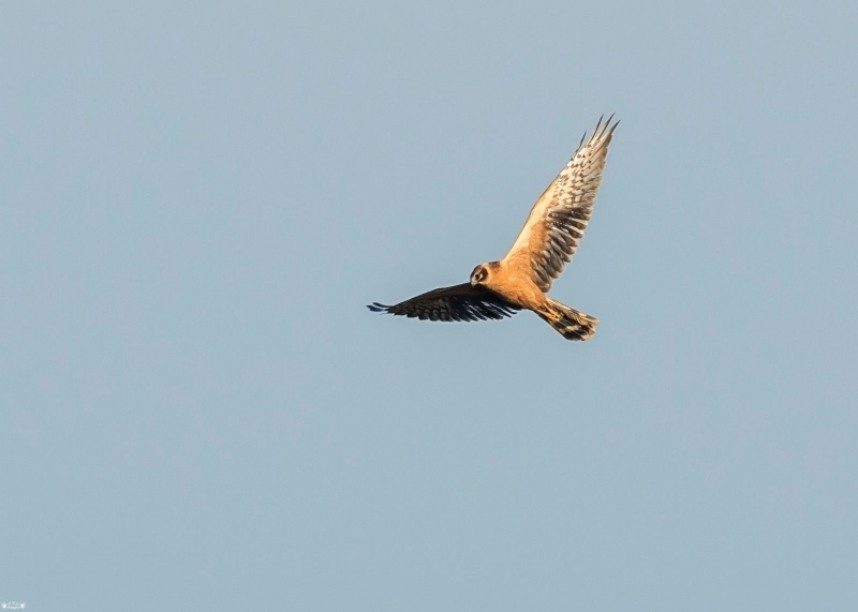
Pallid Harrier Welwick Saltmarsh © Russ Bridges
Plenty of other action on the same day included a Northern Bullfinch trapped at Buckton, a Grey Phalarope passing Flamborough, a late Cory's Shearwater past Long Nab, and the Pallid Harrier wandering over for the first of several jollies in the greater Spurn area, where a Richard's Pipit was also found (staying for several weeks). More Grey Phalaropes were noted at Spurn and Tophill Low on 8th, when a late Barred Warbler appeared at Flamborough. Hornsea Mere had its fair share of quality birds with Smew, Black-necked Grebe and Slavonian Grebe over the following days, while the Bempton area's attraction to 'eared' owls continued with a Long-eared mid-month
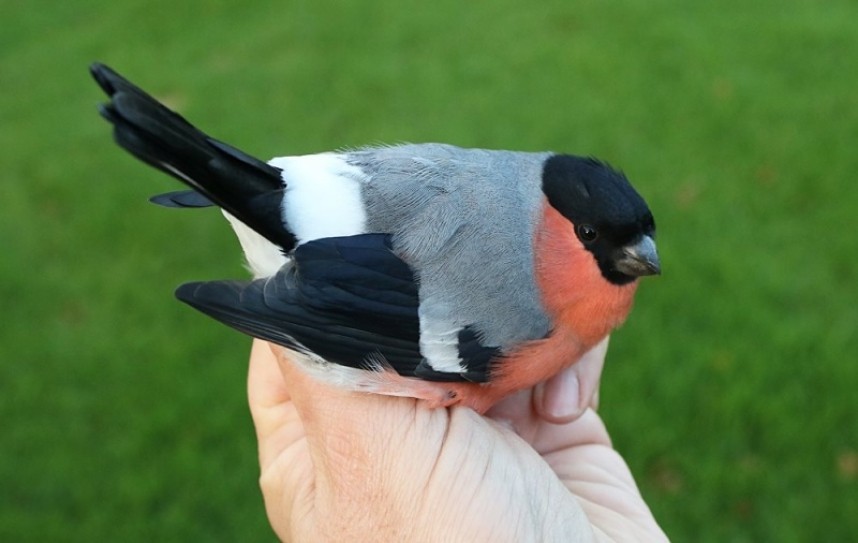
Northern Bullfinch © Mark Thomas
Scarborough harbour's excellent reputation for close-up winter visitors was upheld by a Black-necked Grebe and a Great Northern Diver for much of the month, while the town's reputation as a reliable Waxwing hotspot during influx years was again well maintained – various flocks of up 50 birds were found brightening up the streets there. Many other places were blessed with their presence, but the largest flock consisted of a least a hundred in Pickering.
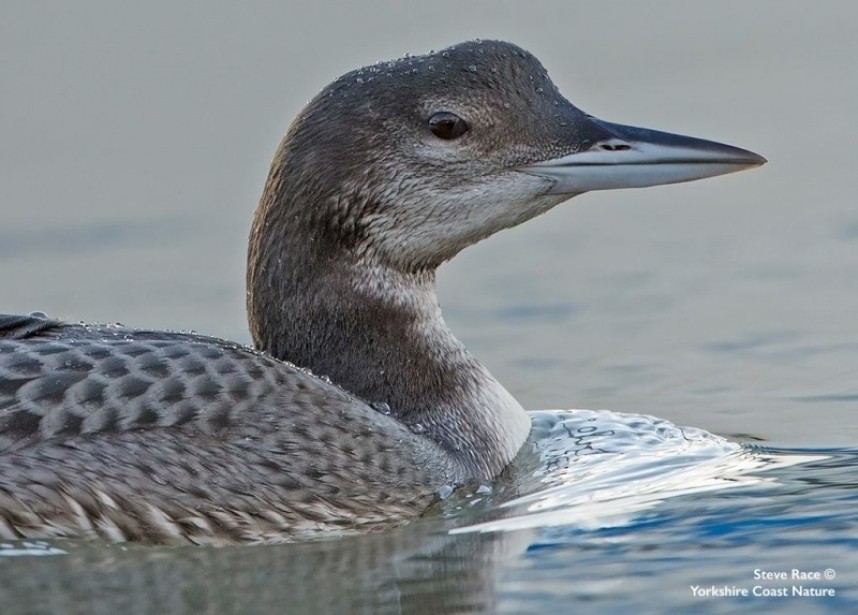
Great northern Diver Scarborough © Steve Race
Spurn accommodated single-figure flocks of both Tundra Bean and White-fronted Goose from 10th, when a Rough-legged Buzzard made the first of several visits to Sunk Island. Shorelarks continued to pop up with pleasing regularity, with a fantastic count of 21 at Crook Ness mid-month – the larkfest there also yielding a Short-toed Lark on 13th (as well as eight Lapland Buntings, which have been on the scarce side this autumn). Shorelarks were also a regular feature at Spurn, where a late Yellow-bowed Warbler appeared on 11th, the same day both Glaucous Gull and Hooded Crow were found at Barmston. The Spurn area continued to produce the goods over the following days, with a Glaucous Gull on 14th, a Firecrest on 15th, a late Pallas's Warbler on 20th, a Caspian Gull on 21st (with another at Tophill Low) and a Black Brant on several dates, while nearby the harrier fans at Welwick were also treated to upwards of ten Water Pipits.
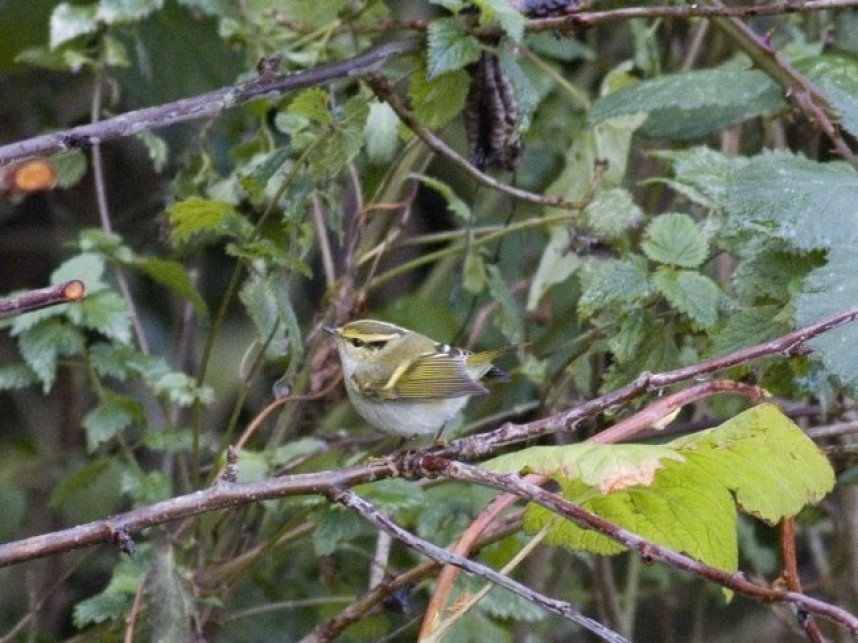
Pallas's Warbler Spurn © Tim Jones
For a species which is rapidly becoming an expected presence locally, Great White Egrets were in relatively short supply this month, with just another single (along with the aforementioned Spurn sightings) at Brough. Scarcer grebes were a little easier to come by however, with (in addition to those already mentioned) a surge of sightings in the last week or so of the month: Red-necked Grebes includedseveral at Filey during the last week of the month and other singles at Spurn, Hornsea and Flamborough; it was a particularly good month for Slavonian Grebes – Filey, Spurn and Hornsea all received visits; and another Black-necked Grebe popped up on freshwater, this time at Tophill Low.
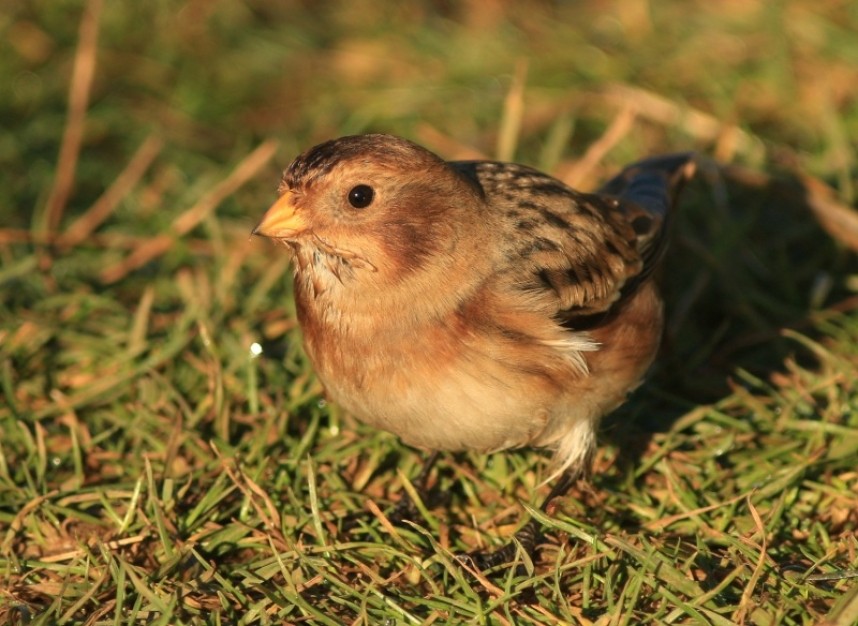
Snow Bunting Filey © Mark Pearson
Snow Buntings were regularly recorded along the coast, but not in any great numbers, and few 'stuck' to specific sites; exceptions included a flock of 30 at Crook Ness on 24th and a handful of long-staying birds on Carr Naze at Filey. Wintering Great Grey Shrikes are a regular feature of the North Yorkshire forests these days, with up to three found in the Langdale area by the end of the month; there may indeed be more to be found deep in those clearings for the intrepidly-minded!
Mark James Pearson YCN
For more wildlife sightings visit these great web sites!
Spurn Bird Observatory, Flamborough Bird Observatory, Filey Bird Observatory and Group, Northern Rustic blogspot , Scarborough Birders, Butterfly Conservation Yorkshire Branch Yorkshire Nature Traingle



 Back to Blog
Back to Blog
